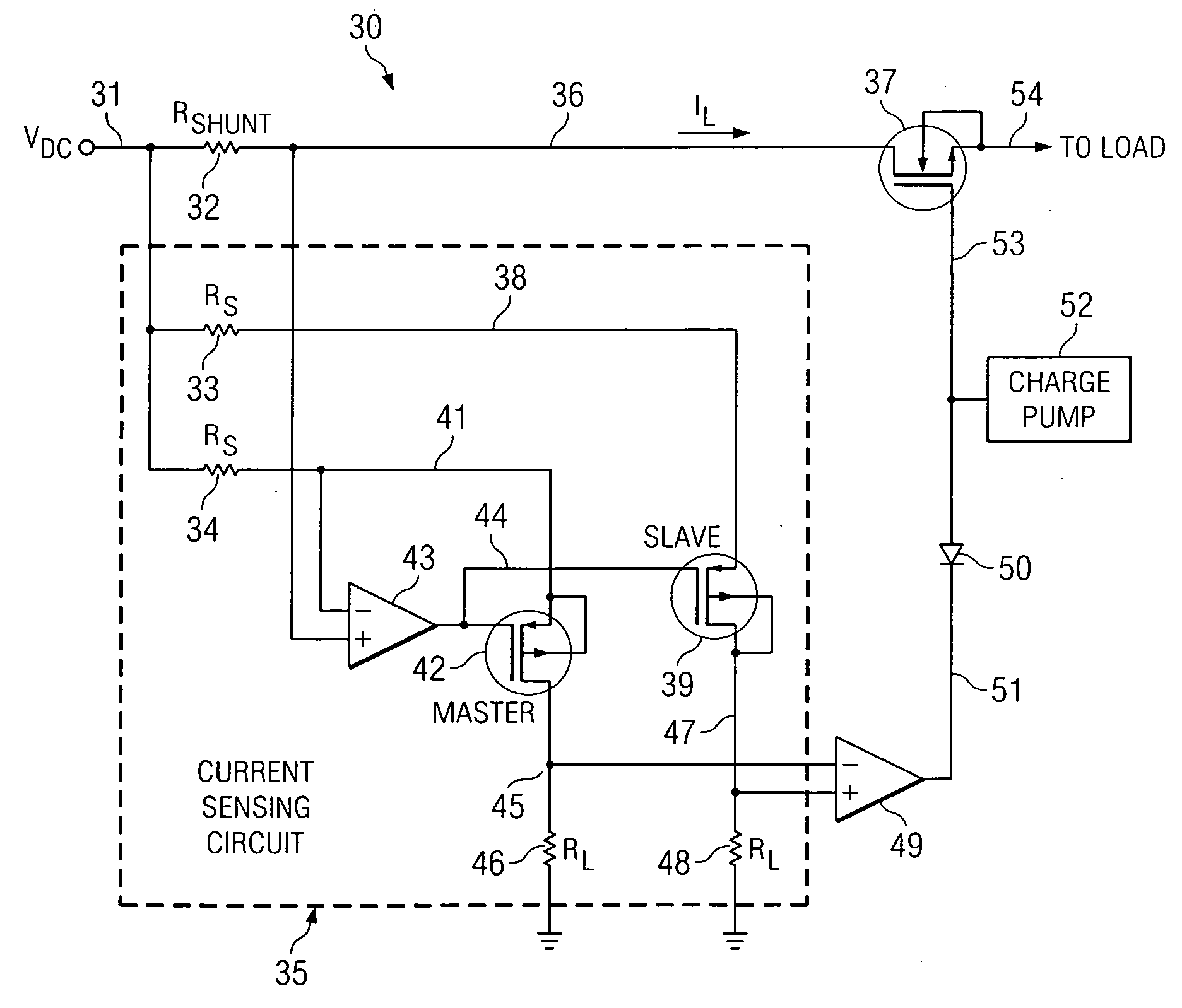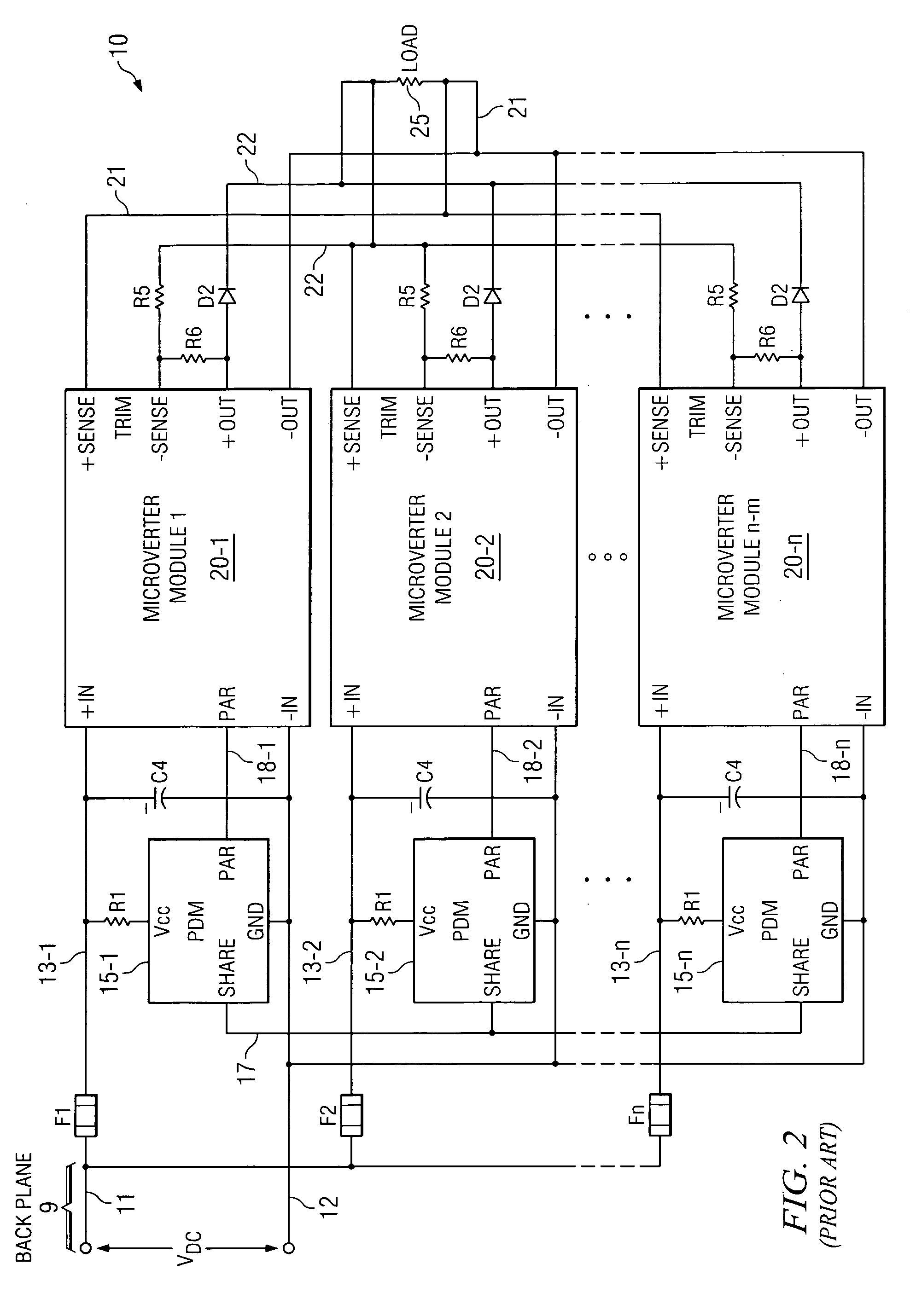Minimum loss and wiring circuit and method for paralleling hot swap controllers
a wiring circuit and controller technology, applied in the field of low loss and wiring circuit for paralleling hot swap controllers, can solve the problems of excessive power loss, high power dissipation loss, waste of power from ballast resistors, etc., and achieve equal load current sharing, reduce power dissipation, and reduce current hogging
- Summary
- Abstract
- Description
- Claims
- Application Information
AI Technical Summary
Benefits of technology
Problems solved by technology
Method used
Image
Examples
Embodiment Construction
[0040]The invention provides a structurally simple hot swap controller and technique for achieving effective parallel connection of two (or more) of the hot swap controllers in such a way as to cause them to deliver equal amounts of current to a common load with a reduced amount of wasted power dissipation compared to prior parallel-coupled hot-swap controllers. The “weaker” of the parallel-connected hot swap controllers (i.e., the one having the highest “on” resistance in its output power transistor) operates with its output transistor in a fully-turned-on mode, and the “stronger” of the parallel-connected hot swap controllers operates to adjust itself in response to current in the output transistor of the weaker hot swap controller so the stronger hot swap controller contributes only an amount of the load current equal to the contribution by the weaker hot swap controller. In a described embodiment, worst-case conditions result in a source-drain voltage drop across an output trans...
PUM
 Login to View More
Login to View More Abstract
Description
Claims
Application Information
 Login to View More
Login to View More - R&D
- Intellectual Property
- Life Sciences
- Materials
- Tech Scout
- Unparalleled Data Quality
- Higher Quality Content
- 60% Fewer Hallucinations
Browse by: Latest US Patents, China's latest patents, Technical Efficacy Thesaurus, Application Domain, Technology Topic, Popular Technical Reports.
© 2025 PatSnap. All rights reserved.Legal|Privacy policy|Modern Slavery Act Transparency Statement|Sitemap|About US| Contact US: help@patsnap.com



